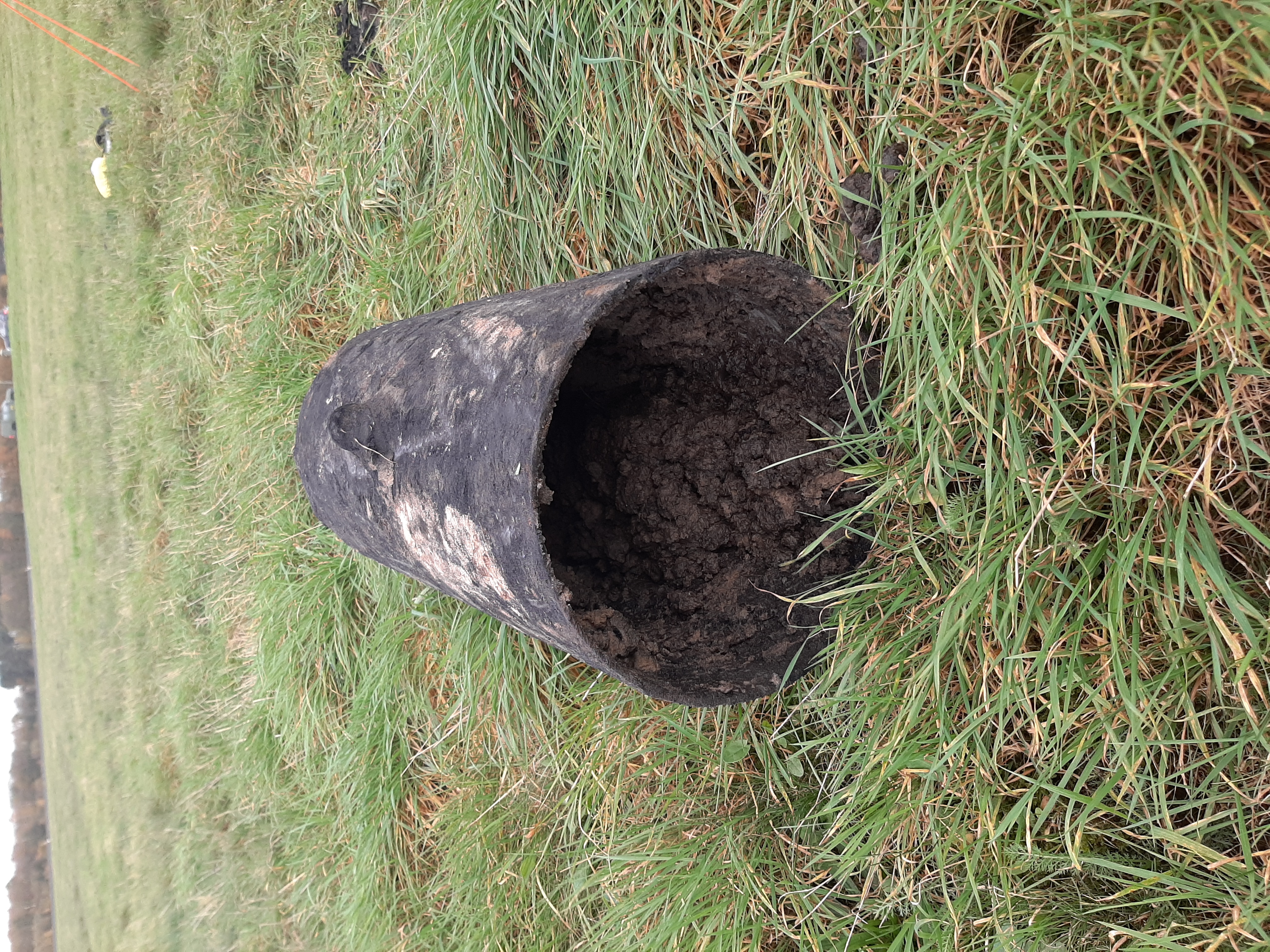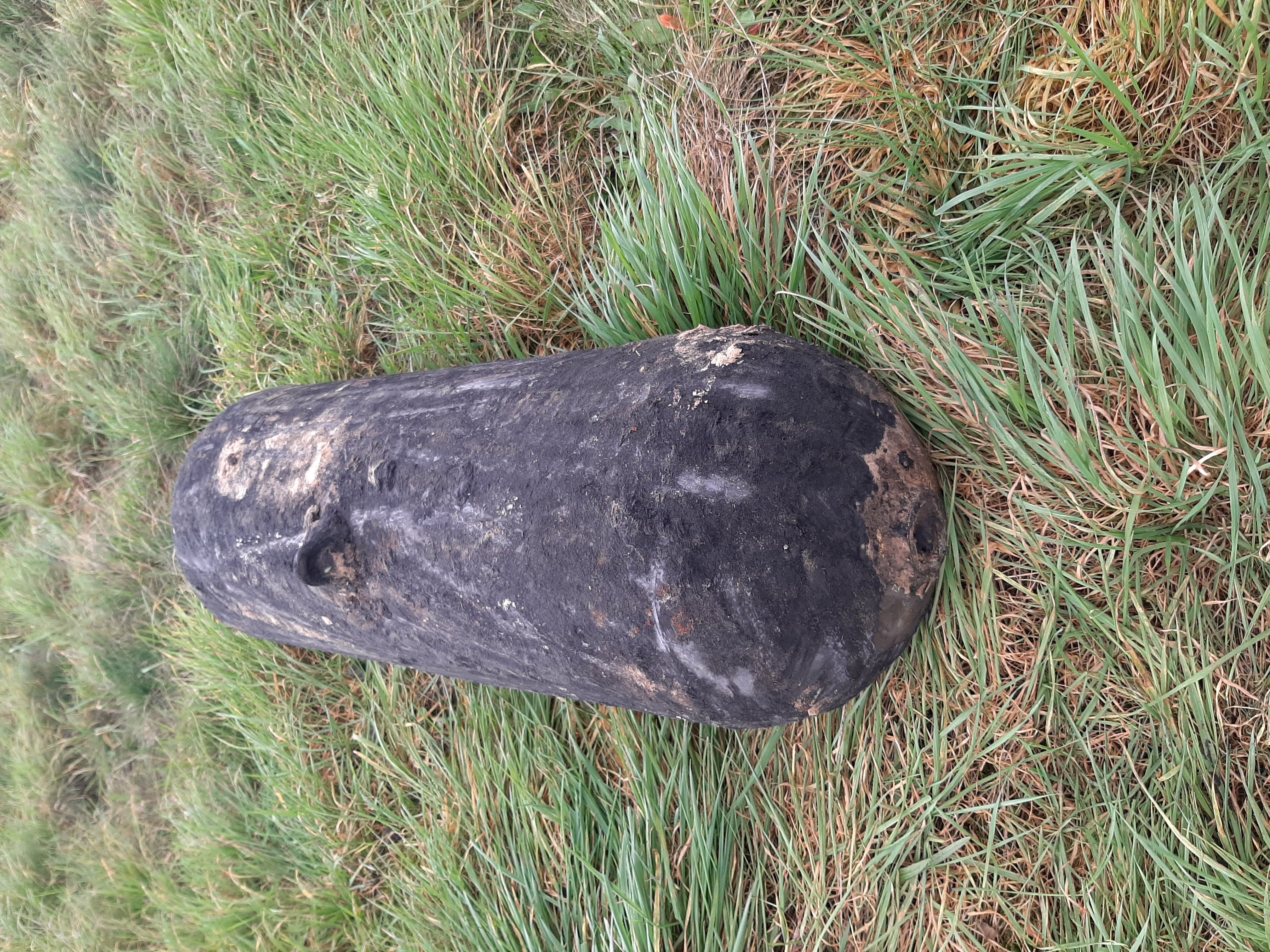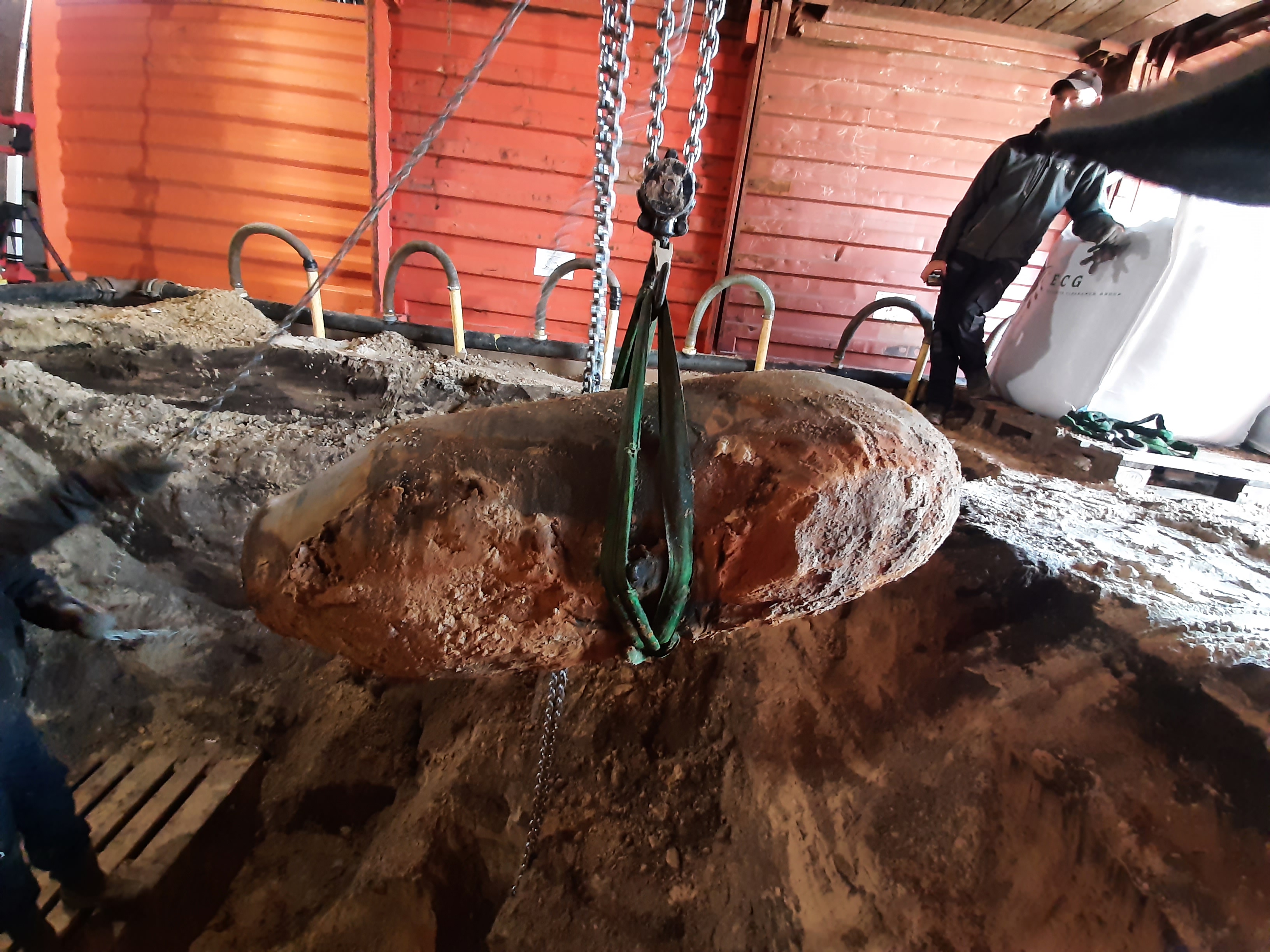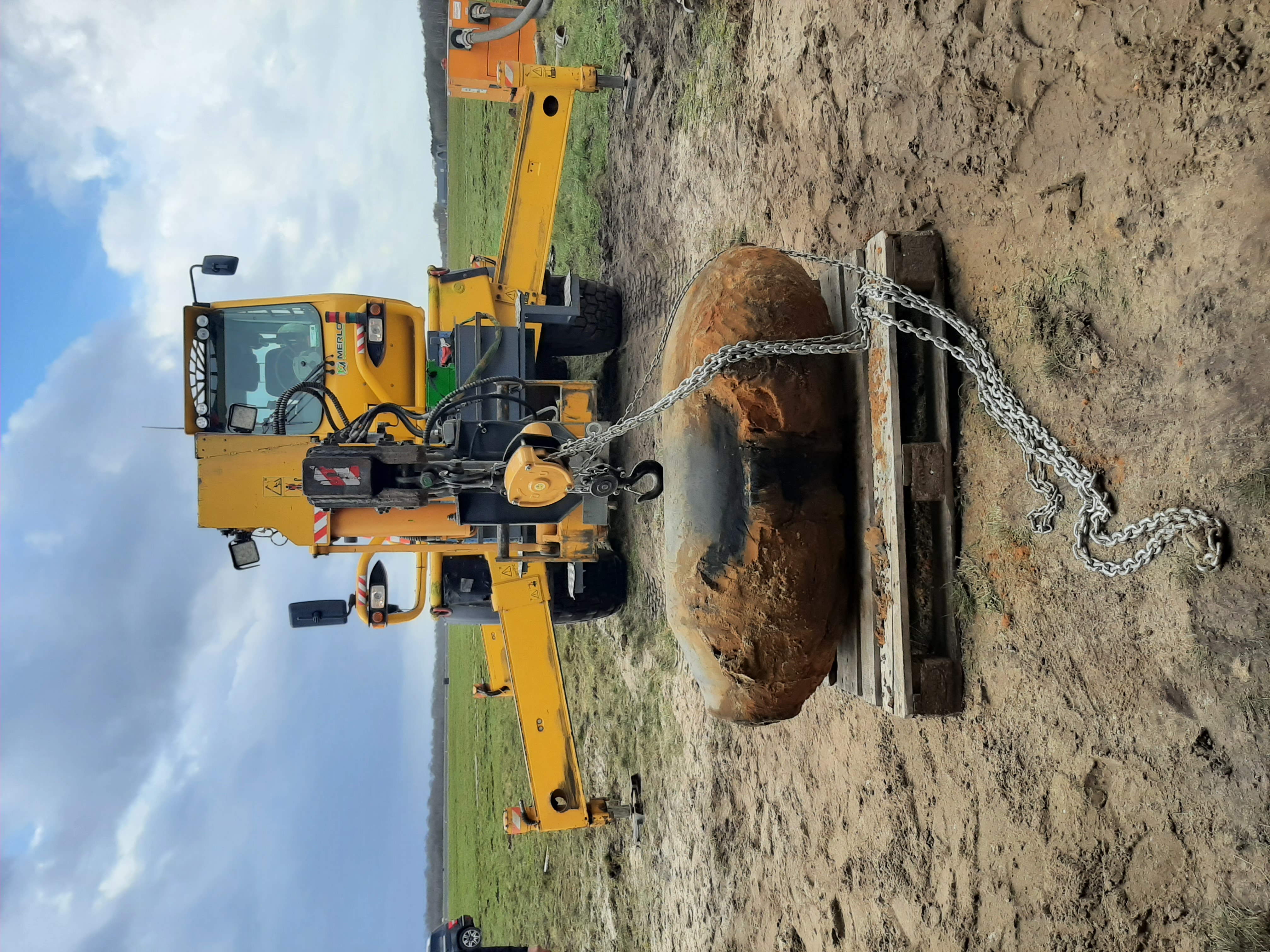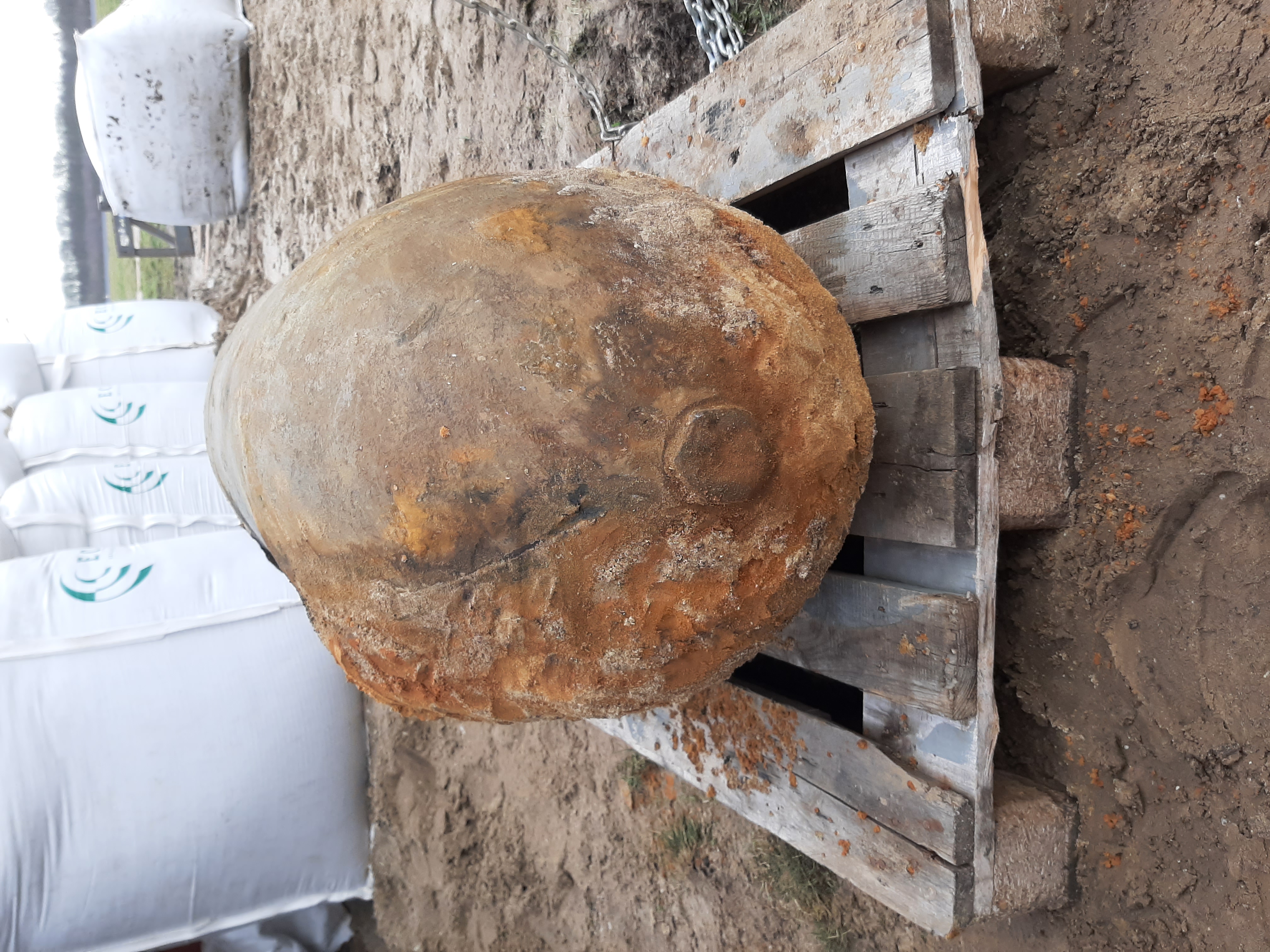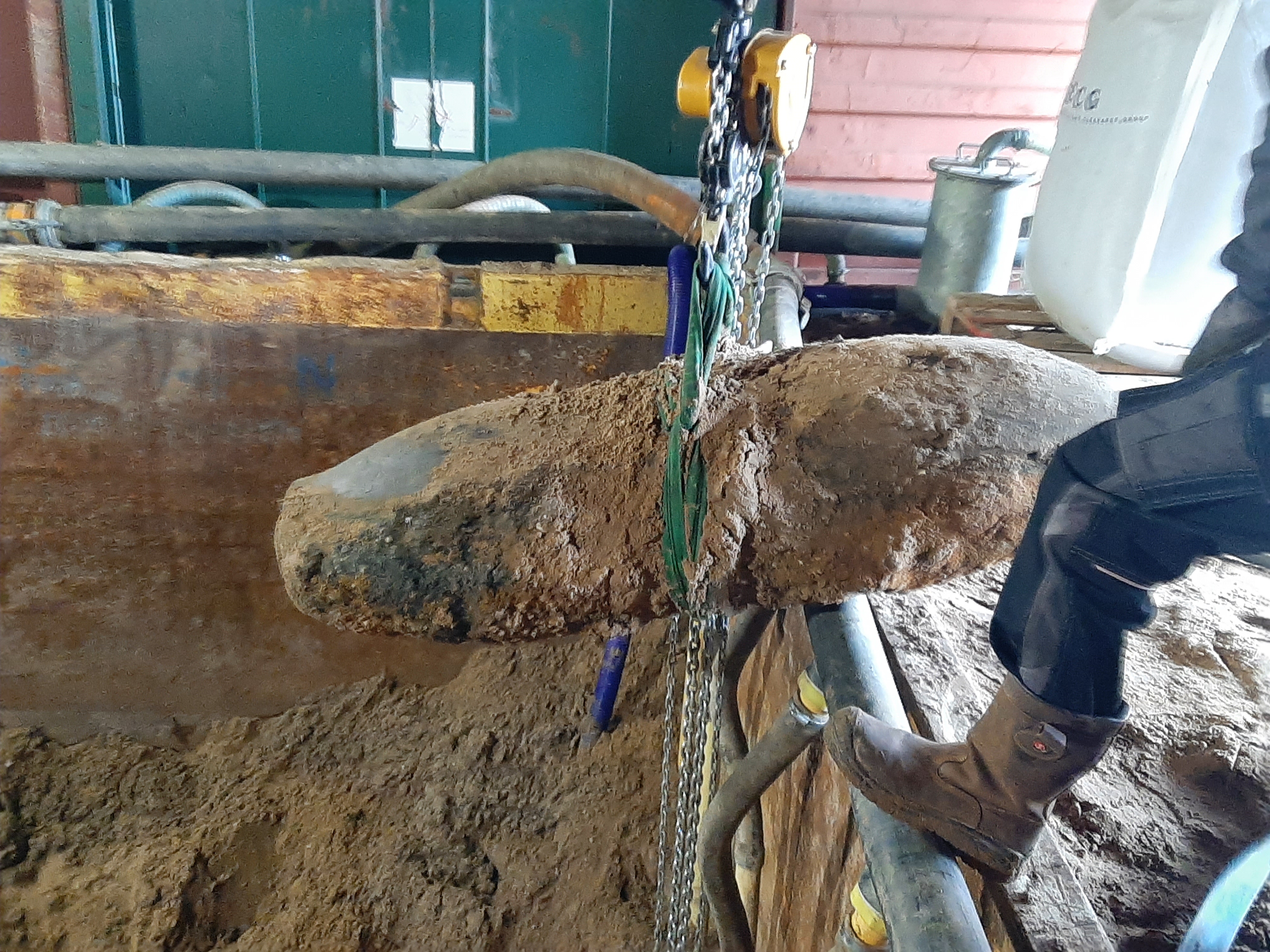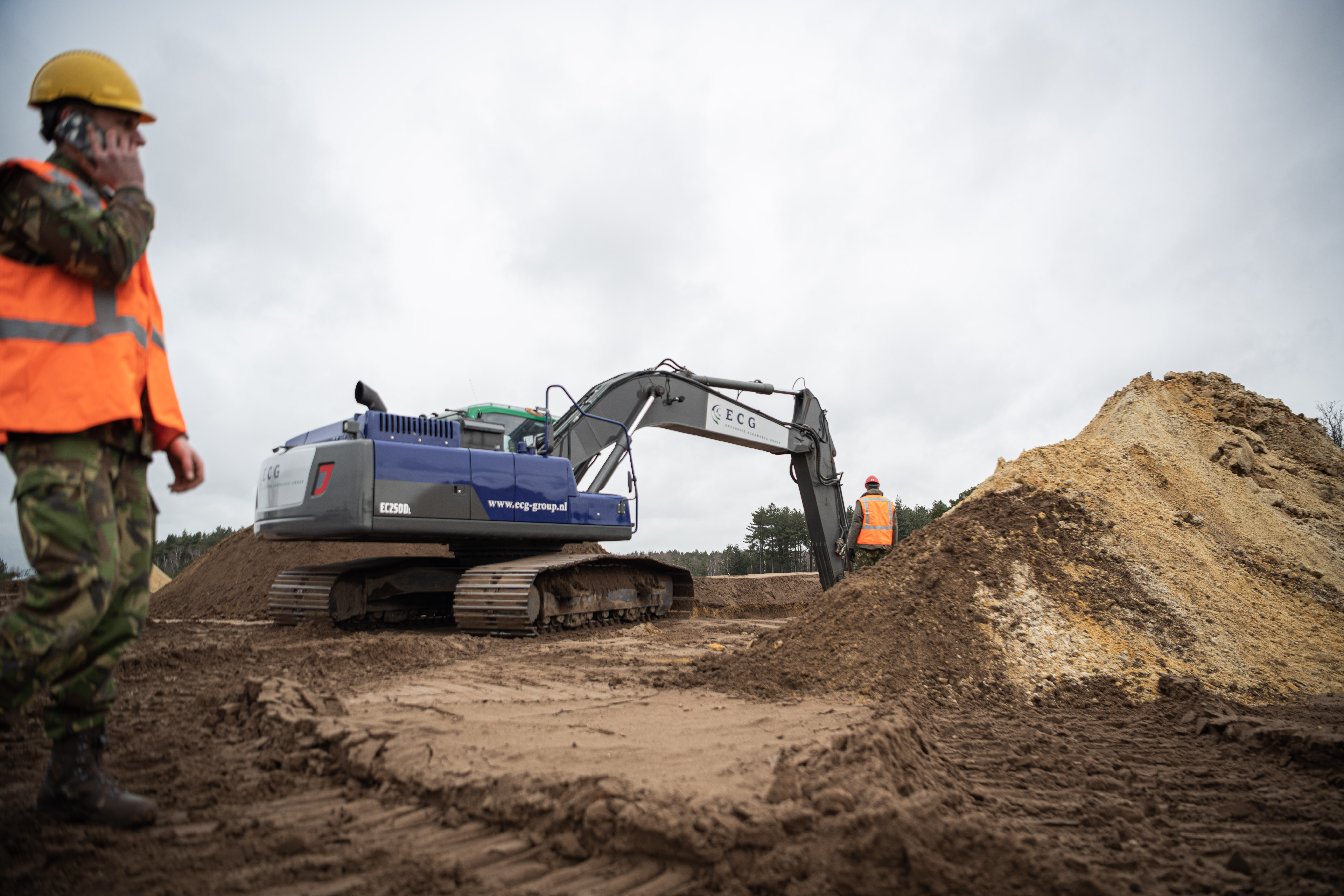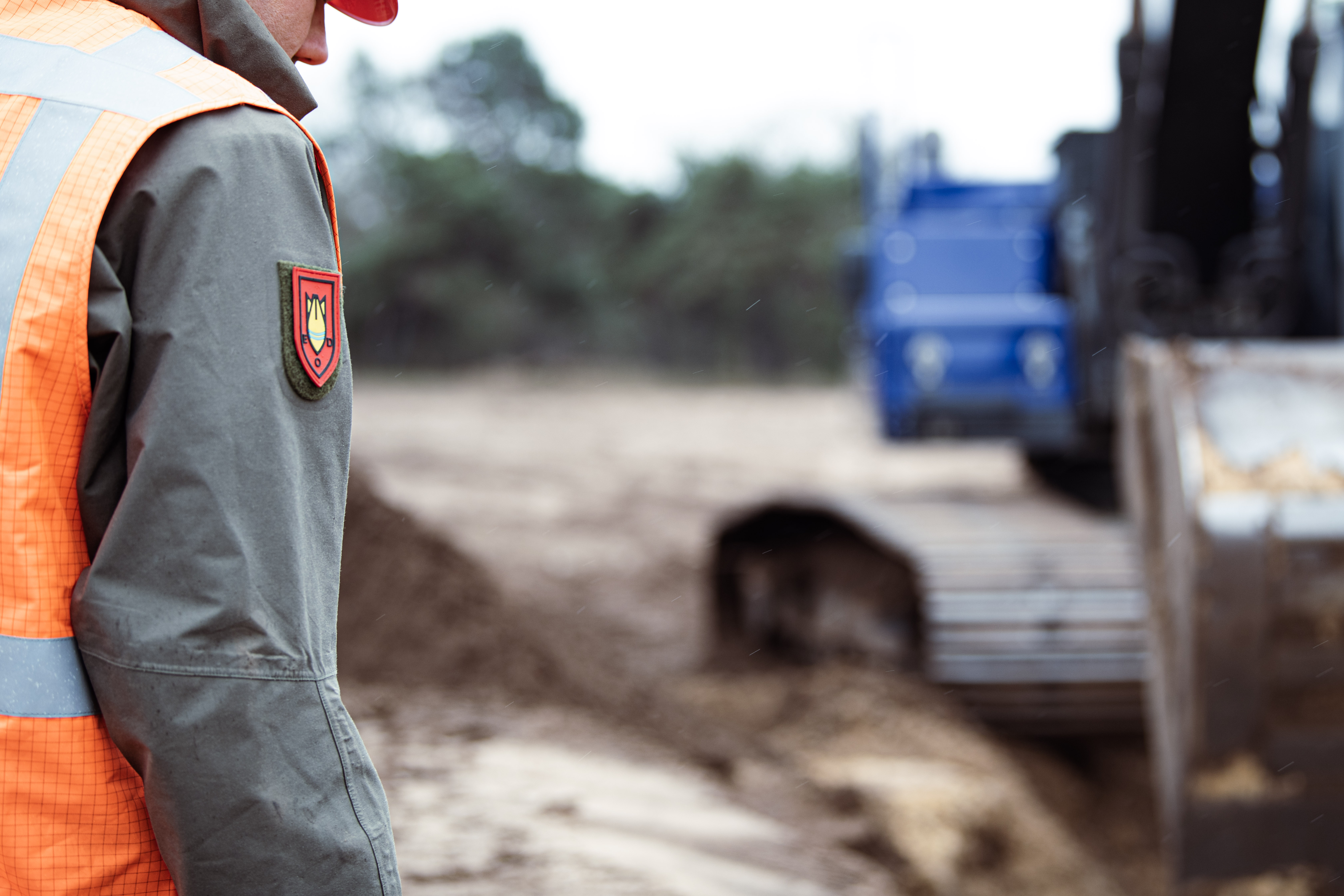Op 1 december 2021 ging, tijdens grondwerkzaamheden op het station van München, een vliegtuigbom af. Volgens de Duitse krant ‘Bild’ werd het explosief geraakt tijdens grondboorwerkzaamheden. Vier arbeiders werden getroffen, waarvan één persoon zwaar gewond raakte.
Gebeurtenissen op een rijtje
Hieronder zijn verschillende ongelukkige gebeurtenissen met vliegtuigbommen opgesomd. Dit is slechts een indicatie van de verschillende ongelukken en gelukkig zijn deze niet gelijk aan de vele duizenden succesvolle ruimingen.
06-04-2004: vliegtuigbom, vissersboot ‘Maarten Jacob’, 3 doden, bom opgevist 100 km west IJmuiden.
06-12-2006: vliegtuigbom, snelweg A3 Aschaffenburg, 1 dode werkzaamheden weg.
1 juni 2010: vliegtuigbom, Güttingen, 3 doden, vroegtijdige detonatie bij demontage.
28-08-2012: vliegtuigbom, München, grote schade, demontage bom.
24-06-2019: vliegtuigbom, Reuver, Limburg, spontaan roken brandbom
25-06-2019: vliegtuigbom, Limburg an der Lahn, schade spontane detonatie.
14-10-2020: vliegtuigbom, Haven Szczecin Polen, vroegtijdige detonatie bij demontage.
28-02-2021: vliegtuigbom, Britse stad Exeter, grote schade ‘gecontroleerde’ vernietiging gaat mis.
01-12-2021: vliegtuigbom station München, 4 gewonden, werkzaamheden station.
Hieruit blijkt dat het aantreffen en of vernietigen van vliegtuigbommen (officiële term ‘afwerpmunitie’) erg riskant is. In Nederland zijn de ongelukken nog minimaal gebleven, maar de voorvallen maken desalniettemin duidelijk hoe gevaarlijk deze vorm van munitie is. Aansluitend wordt hierdoor duidelijk waarom in Nederland diverse munitie opsporingsbedrijven zijn opgericht, die allen gebonden zijn aan strikte voorwaarden en wetten.
Oud roest
Een veelgehoorde kreet is: “…ach moeten die dure onderzoeken nu? Het is toch allemaal oude roest? Het ligt er al zó lang… Die bommen en granaten zijn zo verroest: die doen toch niks meer!” Deze opmerkingen zijn niet terecht.
Een munitietechnicus en EODD-er (Explosieve Opruimingsdienst Defensie) weet dat hoewel de buitenkant van een munitieartikel meestal verrot is, de inhoudelijke techniek van het munitieartikel nog in werkende staat verkeerd. Maar hoe kan in dit geval een vliegtuigbom toch nog tot spontane ontploffing komen?
Verschillende oorzaken
De oorzaken zijn van detonatie zijn verschillend. Springstof kan in de loop der jaren gaan kristalliseren in de bodem. Hierdoor kan de springstoflading erg gevoelig worden voor aanrakingen.
Een ander voorbeeld is wat er mogelijk in München is gebeurd. Een munitieartikel kan door menselijke handelingen ook tot detonatie worden gebracht. Hierbij moet gedacht worden aan dat een munitieartikel geraakt wordt door een grondboor, heipaal of dat het munitieartikel door een non-professioneel iemand wordt opengemaakt.
Ten derde zijn er verschillende typen ontstekers die in de munitiewereld ‘’buizen’’ genoemd worden. Een voorbeeld hiervan is een mechanische tijdsbuis. Deze buis heeft een ontstekingssysteem die vergeleken kan worden met een eierwekker. De tijdsbuis wordt, voordat het samen met het munitieartikel verschoten wordt, vooraf ingesteld. De tijdsbuis wordt door middel van een draaimechanisme ingesteld op een tijd net zoals een eierwekker.
Het gevaar van deze buis is dat het niet duidelijk is op welke tijd de ontsteker is ingesteld en waarom deze niet is afgegaan tijdens WOII. Het tijdsmechanisme kan bijvoorbeeld bij het neerkomen van het munitieartikel geblokkeerd zijn, waardoor het tijdsmechanisme vastgehouden wordt. Deze kan wederom van start gaan wanneer het munitieartikel geroerd wordt.
Tot slot kan er bij afwerpmunitie gebruik zijn gemaakt van een chemische lange tijdsontsteker. Hier zal in het volgende onderdeel dieper op ingegaan worden.
Waarom een chemisch lange tijdsontsteker op een bom?
Het is bekend dat de Geallieerden gebruik maakten van een mix van verschillende typen afwerpmunitie tijdens bombardementen. Oftewel: in het bommenruim van een vliegtuig zaten verschillende typen bommen met verschillende typen ontstekers erop.
Zo konden bijvoorbeeld eerst brisantbommen uit het bommenruim naar beneden worden geworpen. De schokgolven van deze enorme detonaties waren instaat om huizen en andere bouwsels te ontzetten. Fundamenten zakten in, dakpannen vlogen van de daken en hiermee werden de woningen een geschikt doelwit voor de volgende lading afwerpmunitie: brandbommen. Die konden de ‘opengebarsten’ bouwsels met uitstekend hout van zolderingen en wapperende gordijnen gemakkelijk in vlam zetten.
Bij de brisantbommen kon ook nog gebruik gemaakt worden van verschillende buizen. Een ‘’schokbuis’’ werd bijvoorbeeld bij het vallen op de grond gedetoneerd. De schade van de brisantbom op bijvoorbeeld een startbaan moest snel hersteld worden om het vliegveld wederom operationeel te brengen. Dit was bekend bij de Geallieerden waardoor de chemische lange tijdsbuis bij dit soort bombardementen ingezet kon worden. Deze buis zorgde ervoor dat de reparatie van de startbaan uitgesteld moest worden vanwege spontane detonaties. Hierdoor moest de vijand langer wachten met reparaties zodat er zekerheid was dat alle bommen ontploft waren.
Hoe werkt het?
In dit onderdeel wordt de Britse chemische tijdsbuis staartpistool No.37 besproken.
Zodra de bom afgeworpen was, trok een veiligheidsdraad uit het ‘pistool’(de Britten noemden de bomontstekers een pistool). Hierdoor kon een impeller vrij draaien door de (val)wind waardoor er een schroef omlaag bewoog in het mechanisme. De schroef zal in het mechanisme een glazen capsule hebben geraakt en deze tenslotte hebben gebroken. In deze capsule zat een zuur, in de vorm van aceton. De aceton lekte omlaag op een zinken afdekplaatje en vrat hier doorheen. Hetzelfde gebeurde bij een celluloid plaatje. Dit celluloid (ook gebruikt voor de gitaarplectrums) loste op door de aceton. Het was echter dit celluloid plaatje wat als enige de vrije doorgang gaf naar een voorgespannen slagpin en slagpinveer. Zodra het celluloid volledig was opgelost sloeg de slagpin onder een zware veerdruk in op een slaghoedje waardoor de bom uiteindelijk tot detonatie werd gebracht.
Een bomontsteker kon ook niet zomaar verwijderd worden. Anti-demontage kogeltjes zorgden ervoor dat het mechanisme alsnog werkte zodra iemand de bom probeerde te demonteren. Hierdoor was deze chemische lange tijdsbuis levensgevaarlijk en uiterst onvoorspelbaar.
Zeer gevaarlijk en onstabiel
Inmiddels is het bekend dat tussen de tien en vijftien procent van verschoten, afgeworpen of anders gebruikte munitie niet werkt. Dit worden blindgangers genoemd. Hier vallen ook vliegtuigbommen onder met een chemisch lange tijdsbuis.
Een afgeworpen bom met een chemische lange tijdsbuis die meer dan 75 jaar na gebruik in een vochtig veld ligt wachten kan uiterst onstabiel worden. Het eerder omschreven celluloid plaatje van de voorgespannen slagpinveer kan hierdoor aangetast zijn. Op deze manier kan bijvoorbeeld een bom, zoals op 25 juni 2019 in het korenveld van het Duitse Limburg an der Lahn, spontaan tot ontploffing komen. Gelukkig zijn er bij dit voorval geen slachtoffers gevallen, maar wel heeft dit verbazing opgewekt bij de omwonende bevolking.
Een verhaal als hierboven is slechts een van de vele voorbeelden waarom het mis kan gaan met “oude en verroeste” munitie. Já, de munitieartikelen doen het terdege nog wel en vaak wordt het zelfs hoe ouder, hoe gevaarlijker en onstabieler. Reden des te meer om als organisatie of bedrijf een partij als Explosive Clearance Group B.V. in huis te halen, want voorkomen is nog altijd beter dan genezen.




















